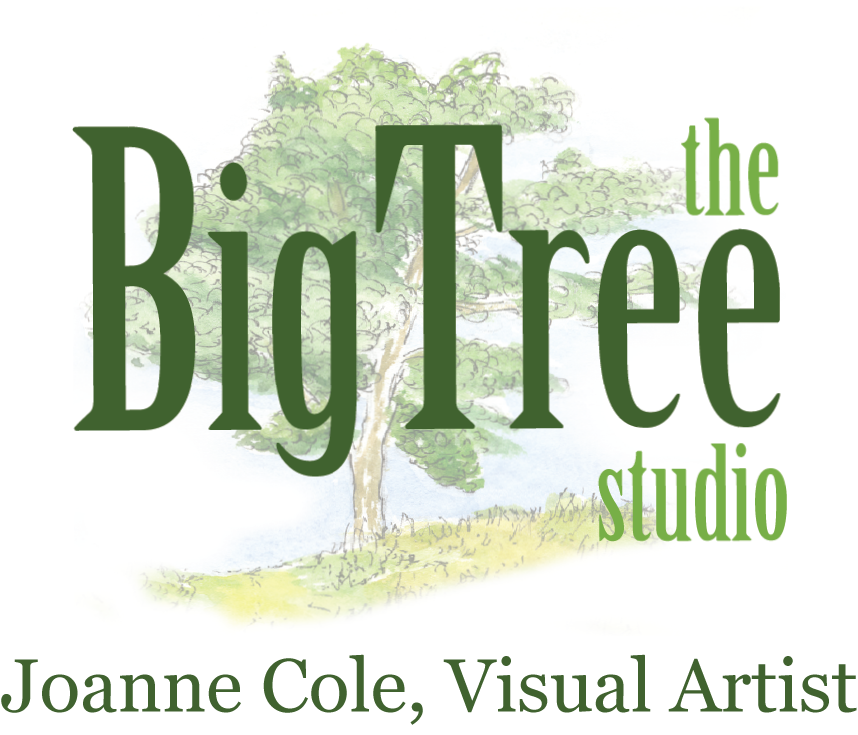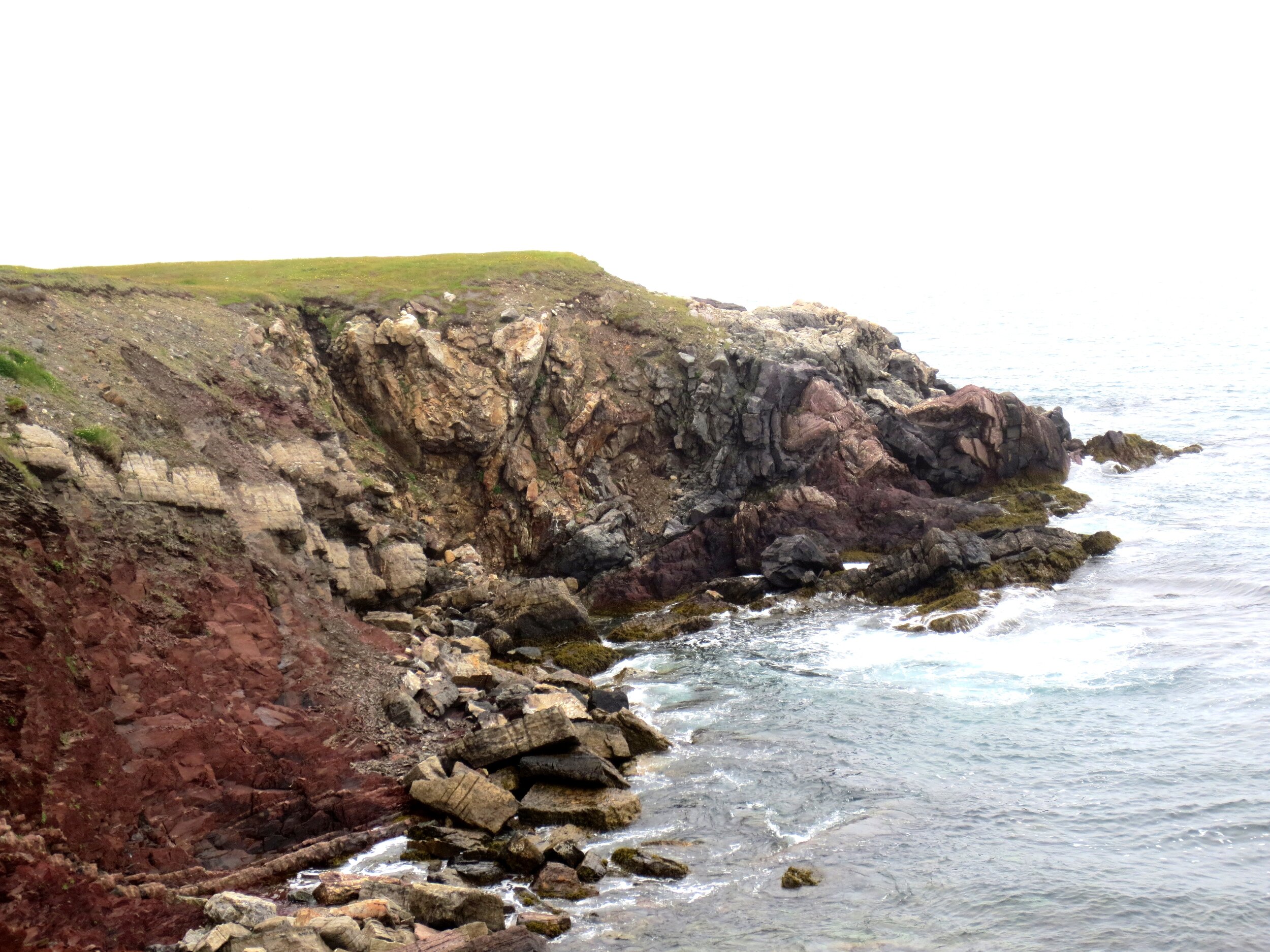All Roads Lead to Here - The Howley Project
James P. Howley
Painting is an intimate practice, I like to know everything about a subject and as I’m recreating it I am learning more. I paint geological structures and I’m interested in the history of the earth and the dynamic processes that form the landscape around us. To find that information in a detailed form I look to geology reports. I use them as travel guides to find interesting structures that tell a story.
Research is the starting point. I work in an Academic Library and have access to primary sources and leads to other references.
I find inspiration in the journals and field work of early geologists, when the science of geology was new and the field notes were more literal and descriptive.
My work in the Queen Elizabeth II Library led me to the discovery of the journals and field books of James P. Howley. In September 2017 I exhibited 10 large paintings in the First Space Gallery at the QEII that were the result of 10 years of research and 6 years of painting.
Howley’s field journal from 1870. Coll-262, Archives and Special Collections, Queen Elizabeth II Library, Memorial University
James P. Howley was a prominent Newfoundland geologist in the late 1800’s. He spent many years traversing the island, looking for coal, assisting with the railway survey, surveying land and looking for economic minerals. He worked as Director of the Newfoundland Geological Survey from 1876 to 1906 and was also the first Director of the Newfoundland Museum.
When I started working in the Map Room in the early 1990’s there were many occasions when a group of research professors would drop in or sometimes call and ask us to find the locations for place names and names of geographic features on older Newfoundland maps. They were in the process of editing and publishing the Reminiscences of James P. Howley, Selected Years. To answer their queries a lot of the older maps and charts were consulted.
Portion of topographic map NTS 1L/16 East, St. Brides, NL, Edition 1, 1949
I became fascinated by their research, following words in a journal and finding the locations on maps. When the book was published and found on the Library shelves I checked it out. I read it and then read it again. I also discovered that the Map Room had editions of Howley’s geology map and the Archives and Special Collections housed his note books and journals. I started my research because I was interested, I didn’t know that it would evolve into a body of artwork.
Excerpt from Howley’s journal describing the structure at Little Dantzic Cove, Burin Peninsula, NL
After many months of reading his journals I found that his love of field work and the Newfoundland landscape spoke to my sense of wanderlust and I knew I had to go to some of these places to find the structures he so beautifully described and create a series of paintings. Through a Project Grant from the Newfoundland and Labrador Arts Council in 2011 and a deferred salary leave from the Library I set off on my own exploration and creation, following in Howley’s footsteps to several locations across the province.
The structure described in Howley’s journal
Finished painting, acrylic on canvas, 28 x 72 in
An important part of this project was to make the journeys to the locations on the same day that Howley had recorded being there. From his journals I was able to pinpoint the exact day he surveyed an area for all but two of the journeys. I felt this gave more authenticity to the research.
Baryte vein in cliff at Deadman’s Bay, St. Brides, NL
Painting in progress
Finished painting, acrylic on canvas, 60 x 36 in.
Altogether I went to 10 locations and recreated the structures on large canvases using acrylic paints. For the exhibition I also displayed copies of the excerpts from his journals that led me to each site.
Link to a public presentation on the project, HERE.
It’s only a small section about 52 paces altogether North Head, Brigus, NL Acrylic on canvas 36 x 60 in - Sold
It is a very beautiful marble in fact, of pale bluish and white streaks with veins of red Sops Arm, White Bay, NL Acrylic on canvas 14 x 50 in - $900
Bottle green hornblende with an admixture of feldspar Shoal Harbour River, NL Acrylic on canvas 14 x 50 in - $900
The more yielding portion of the strata Long Point, Port au Port Peninsula, NL Acrylic on canvas 30 x 30 in - Sold
The whole mass presents a very peculiar appearance, being parti-coloured like a patch quilt Change Islands, Notre Dame Bay, NL Acrylic on canvas 24 x 60 in - Sold
A peculiar red and green arenaceous shale Change Islands, Notre Dame Bay, NL Acrylic on canvas 30 x 50 in - Sold
Altogether the cliffs are very peculiar composed of red, yellow and green rock all jumbled together Bellevue Beach, Isthumus of Avalon, NL Acrylic on canvas 36 x 48 in - Sold
They extend westward to a long low point called Three Rock Point and probably run out into the cove of the same name Three Rock Cove, Port au Port Peninsula, NL Acrylic on canvas 26 x 56 ¼ in - Sold
There was a considerable vein running up through the cliff three or four hundred feet high Cross Point, St. Brides, NL Acrylic on canvas 60 x 36 in
Here all is confusion, there has inevitably been a great deal of disturbance Little Dantzic Cove, Burin Peninsula, NL Acrylic on canvas 28 x 72 in - Sold



















